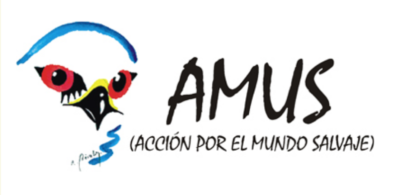Last week, 12 Griffon Vultures that hatched in the wild in Spain were transferred to Sardinia to support the recovery of the local population, the only remaining natural colony of the species in Italy. Healthy and strong, these young Griffon Vultures travelled over 600 km by boat to join the restocking efforts carried out in Sardinia within the LIFE Safe for Vultures project. This is their story.

Restocking the Griffon Vulture population in Sardinia
Every year in Spain, several Griffon Vultures that fall ill or get injured are rescued and enter wildlife recovery centres to receive veterinary care. The 4 females and 8 males that have just arrived in Sardinia were mainly juveniles found in a weak condition. They were then rehabilitated at AMUS and Los Hornos wildlife recovery centres in Extremadura, Spain. After being taken care of by the attentive veterinary staff from both centres, the 12 Griffon Vultures fully recovered and were donated by Junta de Extremadura to Sardinia, thanks to a partnership that is fundamental to the many restocking efforts ongoing in Italy, Cyprus and Bulgaria. The birds selected spent the necessary quarantine period and underwent the health checks at AMUS before their transfer to Sardinia, coordinated by the Vulture Conservation Foundation.
From the port of Barcelona to Sardinia, the Griffon Vultures travelled over 600 km by sea and arrived in Porto Torres on 5 March, where they were welcomed by our partners at the Regional Agency Forestas and veterinary staff from the Bonassai-Olmedo Wildlife Recovery Center (CARFS). Despite the long and sometimes stressful trip, the birds arrived safe and the preliminary health checks performed indicated they are healthy and strong.

The Griffon Vultures arrived safely, what now?
For the next two weeks, the birds will stay in quarantine aviaries until the blood analysis results are available, and will then be transferred to an acclimatisation aviary in Villasalto, southern Sardinia, to get familiarised with their new landscape. Meanwhile, each received a metal ring and was fitted with a coloured tag, which will help our local partners monitor and identify them in the wild, at long distances, once they are freely flying across the Sardinian skies.
Spending some months in the acclimatisation aviary is an important step before releasing the birds into the wild, and a typical procedure for restocking species. Under the attentive eyes of our local partners, the birds will be fed and socialise in the aviary over the coming months to get used to their new environment.
Since 2021, the LIFE Safe for Vultures project is building on the experience and results of the previous project, LIFE Under Griffon Wings, and ensuring the continuity of the conservation actions. Project partners, with the support of our network of recovery centres and zoos from across Europe, are helping bring back the species to territories where they once thrived but are now under threat or extinct. Earlier this year, for instance, two juvenile Griffon Vultures bred in captivity in Holland were released.

A breath of hope to the Sardinian Griffon Vulture population
Sardinia was once home to three species of vultures; the Griffon, Cinereous and Bearded Vulture. Several threats during the last decades of the 20th century led to the extinction of the last two species, and only the Griffon Vulture survived. From an estimated population of 800-1200 individuals back in the 1940s, the Griffon Vulture population was confined to the north-western part of the island, with only 30 breeding pairs and 130 individuals in 2013. This remaining colony holds an important genetic heritage since it is the last natural breeding population in Italy.
To help reverse the Griffon Vulture population decline and tackle the main threats that hinder the species’ recovery, in 2015, many partners from Italy and abroad joined forces within the LIFE Under Griffon Wings, which preceded the current LIFE Safe for Vultures project. More than 80 Griffon Vultures coming from Spanish recovery centres and various zoos in Europe were released, and the Griffon Vulture was once again observed in areas from which the species had been absent for decades. The population grew to 57 pairs and 250 birds in 2020 and, according to the last census held in 2022, there are currently 316 to 338 individuals in Sardinia.
Many thanks to all partners and entities involved in the transport and reception of the Griffon Vultures to Sardinia. We hope they adapt well to their new home! Sign up for our monthly newsletter to receive in your inbox the latest updates from the Griffon Vultures in Sardinia once they are ready to be released!
LIFE Safe for Vultures

LIFE Safe for Vultures is a new project co-financed by the EU’s LIFE Programme, acting as the first step to the restoration of the vulture guild in Sardinia. The University of Sassari leads the project in collaboration with Agenzia Regionale Forestas, Sardegna Corpo Forestale, E-Distribuzione and the Vulture Conservation Foundation. LIFE Safe for Vultures builds on the work of the successful LIFE Under Griffon Wings, with the ultimate objective for Griffon Vultures to regain their historic ranges and distribution areas from the central-eastern part of Sardinia to the south and at the same time promote the long-term survival of the species on the island. The project team is working to expand the network of farm feeding stations, create several anti-poison dog units to tackle wildlife poisoning, establish an additional feeding station in the south of the island, restock the population by importing 40 additional Griffon Vultures and reduce the threat of collision and electrocution with energy infrastructures.






